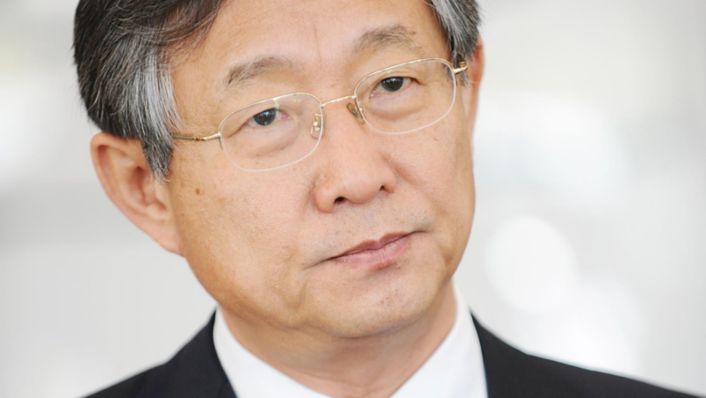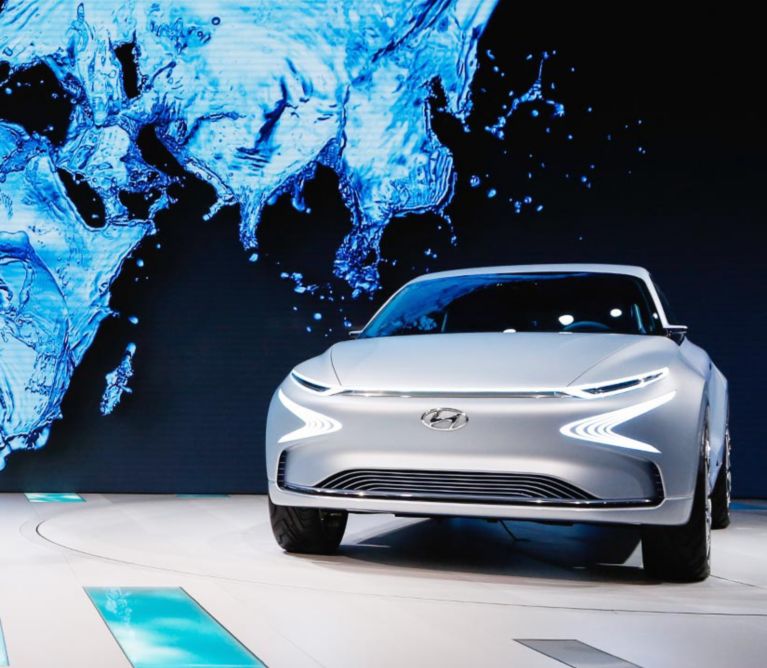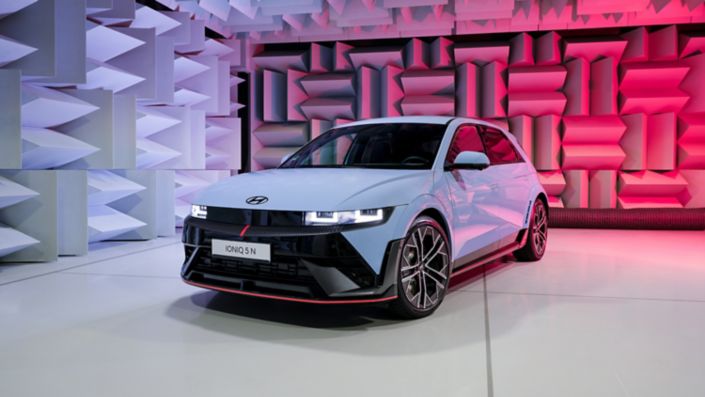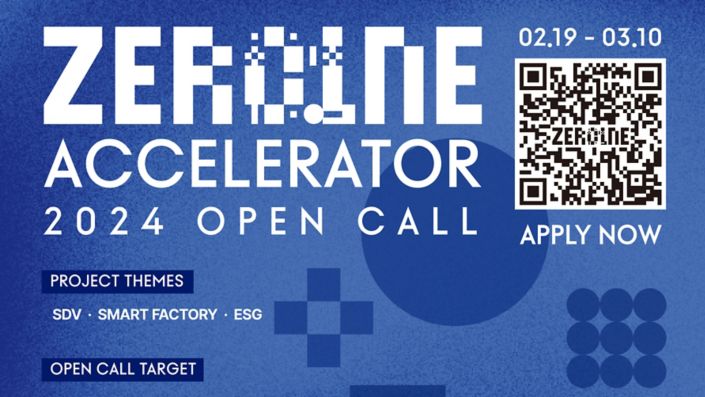At the Consumer Electronics Show (CES) in Las Vegas you revealed your vision for “Future Mobility”. Could you explain this vision in a few words?
Advancements in technology, a new generation of demanding customers and the aging society are the main drivers behind our vision.
We believe Hyundai is addressing these new challenges in three ways:
New Eco-cars and advanced self-driving technology, which will help protect the environment and allows drivers to navigate and be navigated safely.
Connected cars and hyper-connected car platforms, answering the needs of a new generation of customers. This will link mobility with the home and workplace.
Wearable robotics, micro-mobility solutions and interactive, health-conscious technology to support society.
Let’s start with Eco-cars. Hyundai is one of the most advanced carmakers when it comes to e-mobility.What are your recent achievements and the next steps?
We are indeed at the forefront in terms of technology and market penetration.
For the last two decades we have been leading the way on hydrogen vehicle development. In 2013, our ix35 Fuel Cell (Tucson Fuel Cell in some markets) became the world’s first mass-produced hydrogen-powered vehicle. This FCEV is currently on sale in 17 countries around the world.
We are very proud of the progress that has been made in rolling out our Fuel Cell vehicle in many European cities. Like our initiatives with the Paris-based electric taxi start-up STEP (Societe du Taxi Electrique Parisien) or the car sharing program of Linde in Germany. Both run the ix35 Fuel Cell as Taxis and car sharing vehicles. These FCEVs will replace petrol and diesel-powered cars and save a considerable amount of CO2 per year in exhaust emissions.
In January of this year Hyundai Motor and 12 other industry leaders in Davos launched the Hydrogen Council. This new forum aims to expedite the transition to a hydrogen energy society and will certainly contribute to the emergence of hydrogen powered mobility.
We also recently launched the IONIQ family, making us the first brand to offer three electrified powertrains in one body. This is a global first.
Looking ahead, our global sustainability strategy is to launch 14 new eco models, including hybrids, plug-in hybrids, pure electric, as well fuel cell electric models by 2020. With this strong portfolio we will shift from being a fast follower to a first mover in eco cars.
You mentioned the ix35 Fuel Cell. At the Geneva Motor Show you unveiled a Future Eco Fuel Cell Concept vehicle, a hydrogen-powered SUV. What are your expectations for this vehicle?
Our concept car is a promise: it raises the bar as regards the performance of fuel cell vehicles. This vehicle will be able to travel over 800 kilometers (almost 500 miles) before it needs to be refueled.
This concept car represents the next step towards fulfilling our ambition of creating a zero-emission society based on hydrogen. Compared with the ix35, the fuel cell technology in the new vehicle is 20% lighter, 10% more efficient and offers a 30% increase in power density. The presented FE Fuel Cell Concept provides a preview of the next generation of our Fuel Cell car, which will be launched in 2018.
The cutting-edge technology and design of the car, inspired by nature and water, reflect the increasingly aspirational appeal of the Hyundai brand. By investing significantly in eco-vehicle design and production, we are attracting ever-greater numbers of sophisticated, technology-aware consumers.
Press material
-
Download
-
Images
Woong Chul Yang, Vice Chairman of Hyundai Motor Company and Head of Hyundai R&D Center is interviewed about Hyundai Motor’s vision of “Future mobility”.

So let’s move to the next big point: Self-driving technology. In Las Vegas two cars were navigating test routes in the City. What are your plans and could you explain your technological approach?
The Autonomous IONIQ is currently an advanced concept model, providing an outlook to the future of self-driving.
Hyundai was the first to present a level 4 autonomous electric vehicle for testing by journalists on the city roads in Las Vegas during the CES. However, we are still in the pilot-phase. Our models currently navigate a series of test routes in the USA and Korea, using the very latest LiDAR technology (a laser and radar-based detection system) to identify the precise position of surrounding vehicles and objects to navigate through its surrounding landscape safely.
Our technology allows these cars to navigate the most challenging situations safely, including high levels of pedestrian traffic, stop lights, road works and road blocks, speed bumps, children and intersections without traffic signals.
Rather than using the typical roof-mounted equipment, we have hidden all the necessary hardware behind the front bumper, retaining the sleek design of the car. This also allows us a more cost effective approach due to less needed technical infrastructure.
Self-driving technologies need connectivity. You mention a “Connected Car Platform”. What is the idea behind this?
Our Connected Car Platform combines intelligent automotive and IT technologies. It will provide greater convenience, comfort and enjoyment when driving our cars.
To enable us to meet our objective of creating hyper-connected, intelligent automobiles that boast the safest and most advanced self-driving systems on the market, we are collaborating with Cisco. This partnership will create a platform optimized for connected cars, which will help enable two-way communication both internally between the car’s system and externally with road infrastructure, other vehicles, internet of Things (loT) devices, and the cloud. Additionally the platform seamlessly integrates the car into the daily lives of users, blurring the line between mobility and customers’ living and working spaces.
With regards to connected and automated vehicles, I should stress that the automotive industry will need to work very closely with telecom operators. These are the companies that will provide the necessary communications infrastructure, network coverage and bandwidth for millions of cars. We will also require the support of policy makers to develop a supportive regulatory framework. As such, we fully support the European Automotive-Telecom Alliance, which was launched in Paris in September last year and brings together all the leading players in this field.
You mentioned society. What are your answers and solutions for an aging mobile society?
We are currently focusing on three building blocks, the first being our ‘Health + Mobility Concept’. We are considering how better in-car conditions might contribute to the management of stress levels and associated consequences of commuting.
Secondly, new, wearable powered robots are set to revolutionize the future of personal mobility. We are working on advanced, assistive exoskeletons for medical, work and daily life. So our ambition is to provide assisted-mobility support beyond the automobile for the well-being of customers.
The third building block of future mobility is the IONIQ Scooter, a portable-mobility device that allows customers to easily reach their final destination. The lightweight, electrically-powered scooter can be stored and charged in the front door of the IONIQ Electric, with an easy one-touch folding structure for maximized portability. The scooter is the result of a study into alternatives for ‘first-and-last mile mobility’, and is another innovation of our research and development program around the Project IONIQ, which works to redefine future mobility through innovation.











